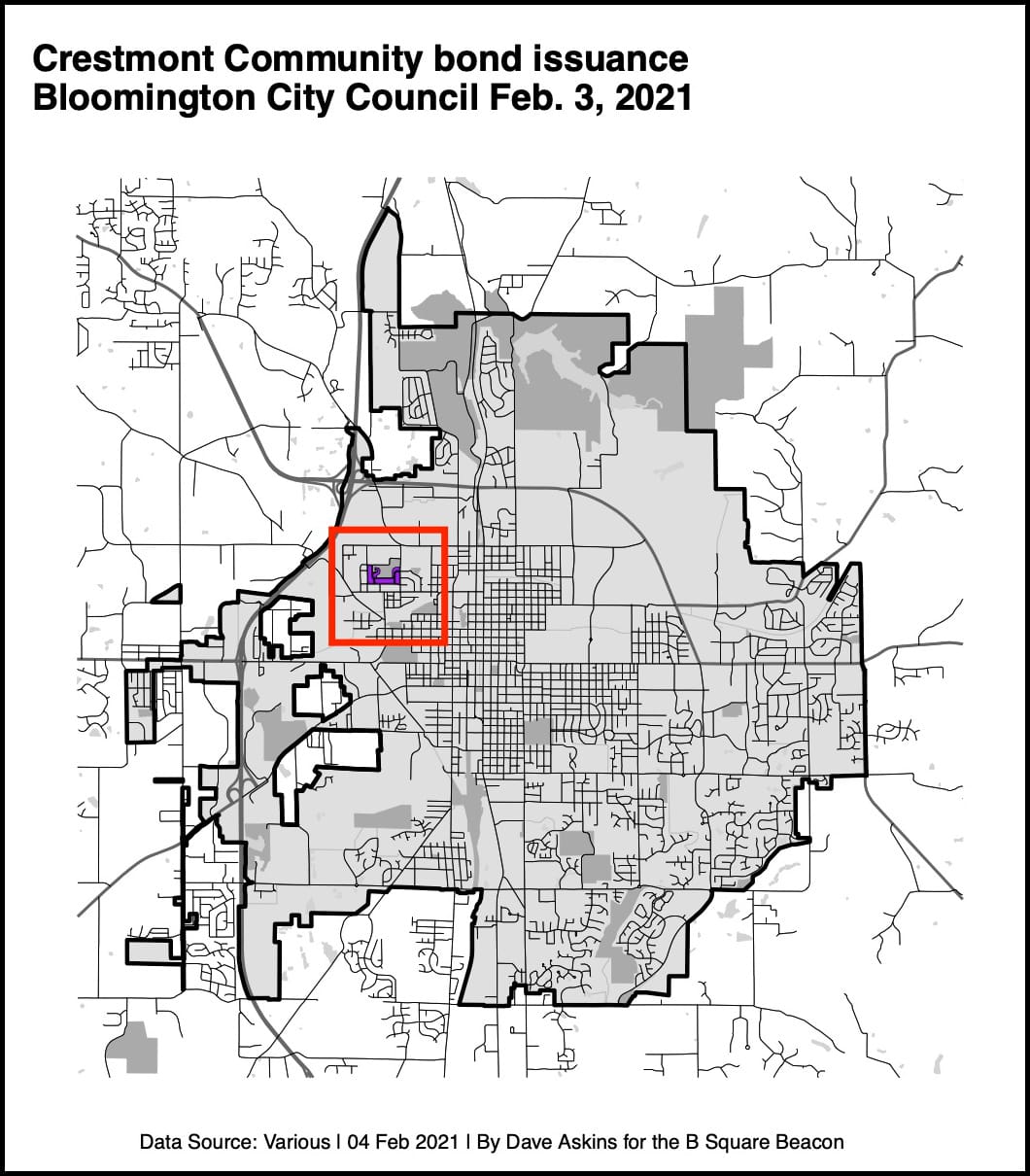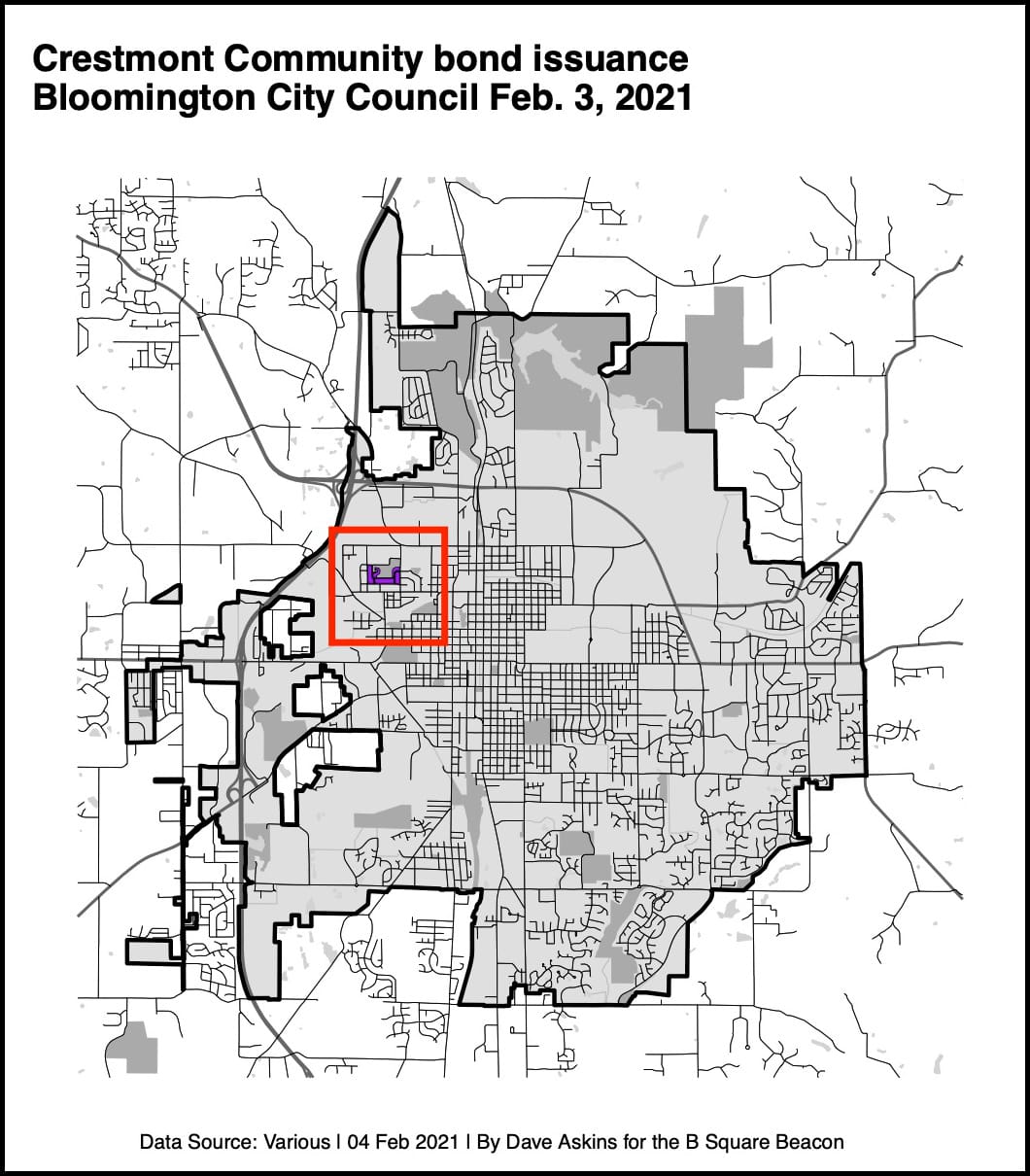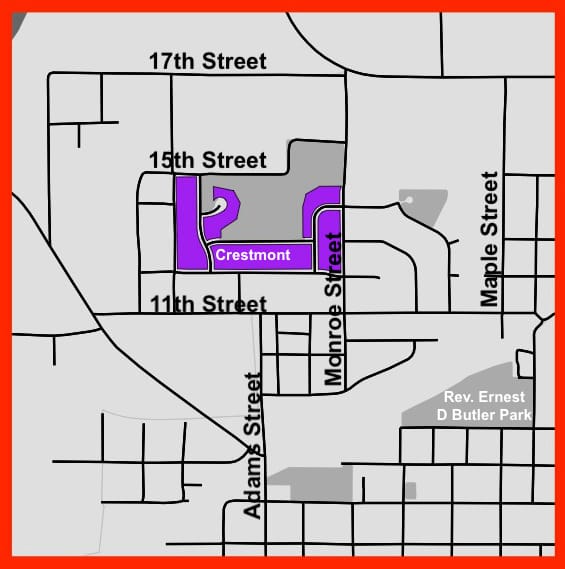Crestmont public housing renovations to be funded with $30M bond issuance, units converted to federal RAD program



Bloomington Housing Authority is now in the final stages of converting all of its traditional public housing units to a new funding model, which gives vouchers to residents of the units.
To help make that happen, Bloomington’s city council voted unanimously at its meeting last Wednesday to approve the preliminary issuance of $30 million in bonds, which will be lent to an entity called Bloomington RAD II, LP.
The limited partnership will use the proceeds of the bond issuance to take over the 196 apartments of BHA’s Crestmont Community public housing complex and renovate the units.
It’s part of the Rental Assistance Demonstration (RAD) Program operated through the U.S. Department of Housing and Urban Development (HUD). The RAD conversions allow for an infusion of cash that allows for crucial renovations to be done on a shorter timeline.
In early 2020, the city council gave a similar approval to an $11-million bond issuance for the RAD conversion of BHA’s Walnut Woods and Rev. Butler apartments.
At that time, Bloomington Housing Authority’s executive director, Amber Skoby, told the city council that Crestmont would be the next and final step in the conversion process.
At Wednesday’s council meeting, Skoby described the Crestmont renovations. Apartments will be reconfigured to accommodate wheelchairs. Safety features will be added.
All the apartments will get new flooring, new kitchen cabinets, countertops, dishwashers, and washers and dryers. Apartments will also get high efficiency furnaces, and air conditioner condensers, new windows, new roofs, and site lighting, according to Skoby.
Skoby described one kind of renovation that will change the unit mix. “We’re adding eight one-bedroom units, by converting some existing three-bedroom townhomes,” she told the council. Skoby said there’s not a huge demand for three-bedroom units. She added, “But we see a tremendous demand for one-bedrooms.”
Also as a part of the planned renovations, the size of Crestmont’s community building will be almost doubled, Skoby said. That will allow Crestmont to host different events, she said.
The expanded community building will have office space for resident services and a space for the residents council.
While their respective units are being renovated—each of which is supposed to be completed in under 90 days—current residents will be moved and relocated, at the BHA’s expense, Skoby said.
The 10 BHA staff who are currently employed at Crestmont will keep their jobs, according to Skoby.
Responding to a question from councilmember Sue Sgambelluri, Skoby said BHA will still have a lot of control over the Crestmont Community, after the RAD conversion. That’s because BHA’s nonprofit, Summit Hill Community Development, and the tax credit investor chosen by BHA, will be part of the ownership structure of Bloomington RAD II, LP. On top of that, BHA will keep its ownership of the land.
HUD will still be connected to Crestmont housing project—through Section 8 vouchers. Current residents of BHA housing will receive special project-based Section 8 vouchers to subsidize their rent, which will be handled by Bloomington RAD II LP, the new ownership structure.
Councilmember Jim Sims asked Skoby about hiring practices for the RAD conversion work—with respect to minorities, minority women, or other historically marginalized groups.
Skoby told Sims that before the RAD conversions at Reverend Butler and Walnut Woods were started, BHA did a lot of outreach with different media outlets, community groups, building associations, especially encouraging women and minority-owned business enterprises to apply. BHA tried to explain the bidding process to those types of businesses so they would know what to expect, she said.
The same approach would be taken with the Crestmont RAD conversion, Skoby said. The BHD will continue to do some outreach, and build relationships—whether it’s with the building trades, moving companies, or suppliers.
Skoby told Sims that kind of spending is tracked each month. So far, about 25 percent of the funding that BHA has paid out has gone towards women, minority, low-income owned businesses, Skoby said.




Comments ()